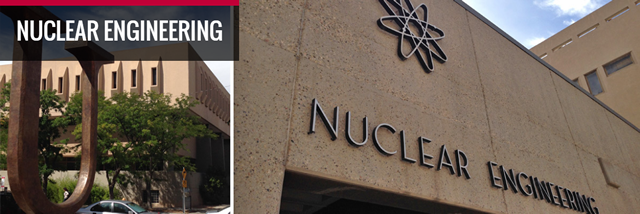
Nuclear Engineering ETDs
Publication Date
7-11-2013
Abstract
The Stand-off radiation detection system (SORDS) program is an advanced technology demonstration (ATD) project through the Domestic Nuclear Detection Office (DNDO) with the goal of detection, identification and localization of weak radiological sources in the presence of large dynamic backgrounds. The Raytheon-Tri-Modal Imager (TMI) is a mobile truck-based, hybrid gamma-ray spectroscopic and imaging system able to quickly detect, identify and localize, radiation sources at standoff distances through improved sensitivity provided by multiple detection modes while minimizing the false alarm rate. Reconstruction of gamma-ray sources is performed using a combination of gamma-ray spectroscopy and two imaging modalities; coded aperture and Compton scatter imaging. The TMI consists of 35 NaI crystals (5x5x2 in each), arranged in a random coded aperture CA, followed by 30 position sensitive NaI bars (24x2.5x3 in each) called the DA. The CA array acts as both a coded aperture mask and scattering detector for Compton events. The large-area DA array acts as a collection detector for both Compton scattered events and coded aperture events. In this thesis, the implemented spectroscopic, coded aperture, Compton and hybrid imaging algorithms will be described along with their performance. It will be shown that multiple imaging modalities can be fused to improve detection sensitivity over a broader energy range than any mode alone. Since the TMI is a moving system, peripheral data, such as a GPS and INS must also be incorporated. A method of adapting static imaging algorithms to a moving platform has been developed. Also, algorithms were developed in parallel with detector hardware, through the use of extensive simulations performed with the GEANT4. Simulations have been well validated against measured data. Results of image reconstruction algorithms at various speeds and distances will be presented as well as localization capability. Utilizing imaging information will show signal-to-noise gains over spectroscopic algorithms alone.
Keywords
gamma-ray, imaging, hybrid, coded aperture, compton, spectroscopic, SORDS, DNDO, homeland security
Sponsors
Department of Homeland Security's Domestic Nuclear Detection Office
Document Type
Dissertation
Language
English
Degree Name
Nuclear Engineering
Level of Degree
Doctoral
Department Name
Nuclear Engineering
First Committee Member (Chair)
Hecht, Adam
Second Committee Member
Fields, Douglas
Third Committee Member
Cooper, Gary
Fourth Committee Member
Sullivan, John
Recommended Citation
Tornga, Shawn. "MOBILE, HYBRID COMPTON/CODED APERTURE IMAGING FOR DETECTION, IDENTIFICATION AND LOCALIZATION OF GAMMA-RAY SOURCES AT STAND-OFF DISTANCES." (2013). https://digitalrepository.unm.edu/ne_etds/3


